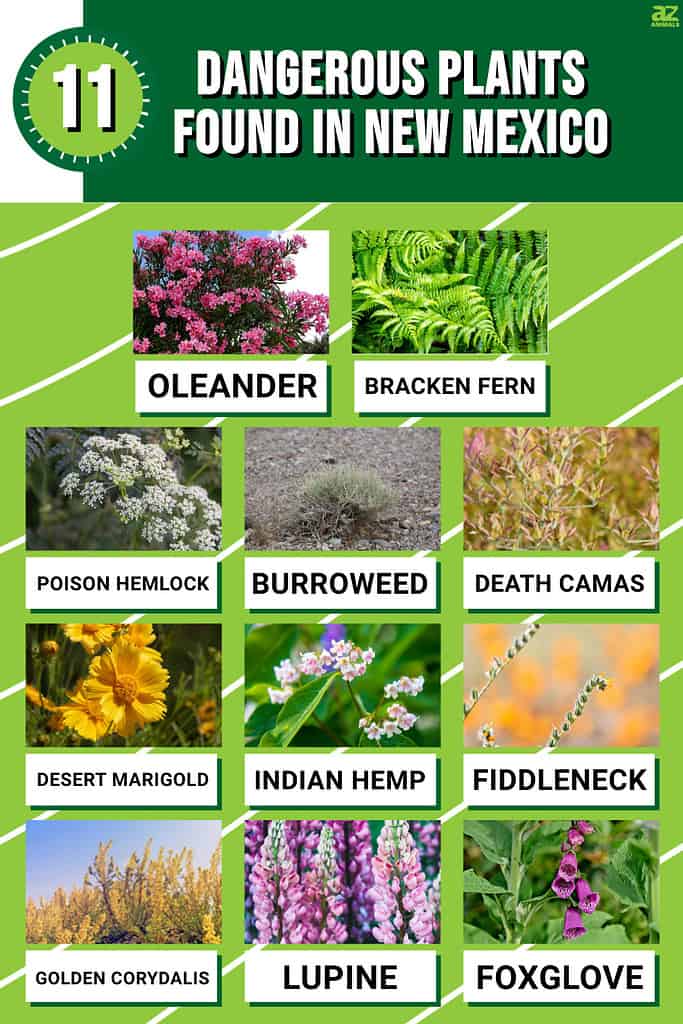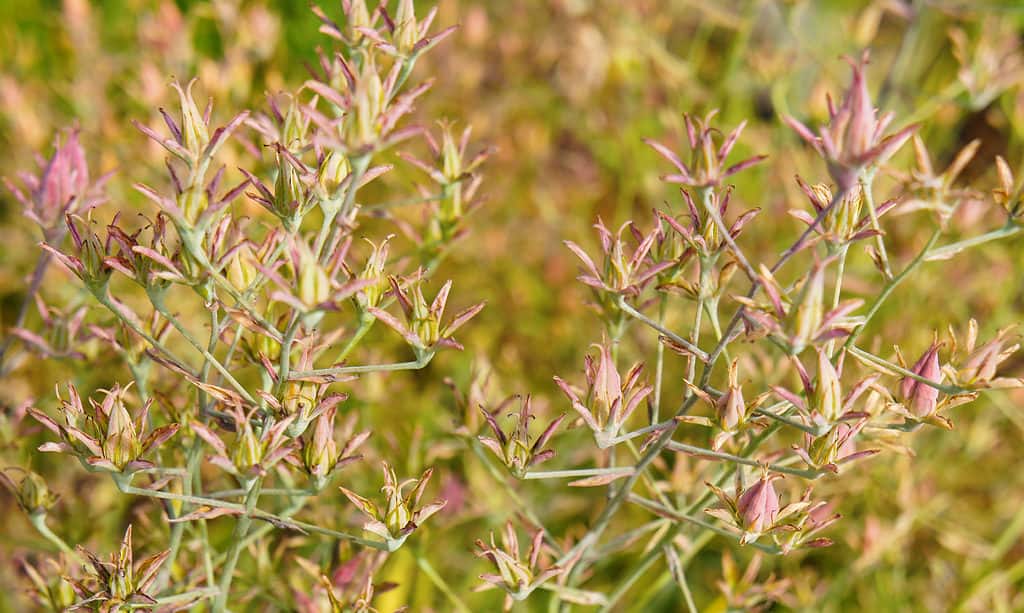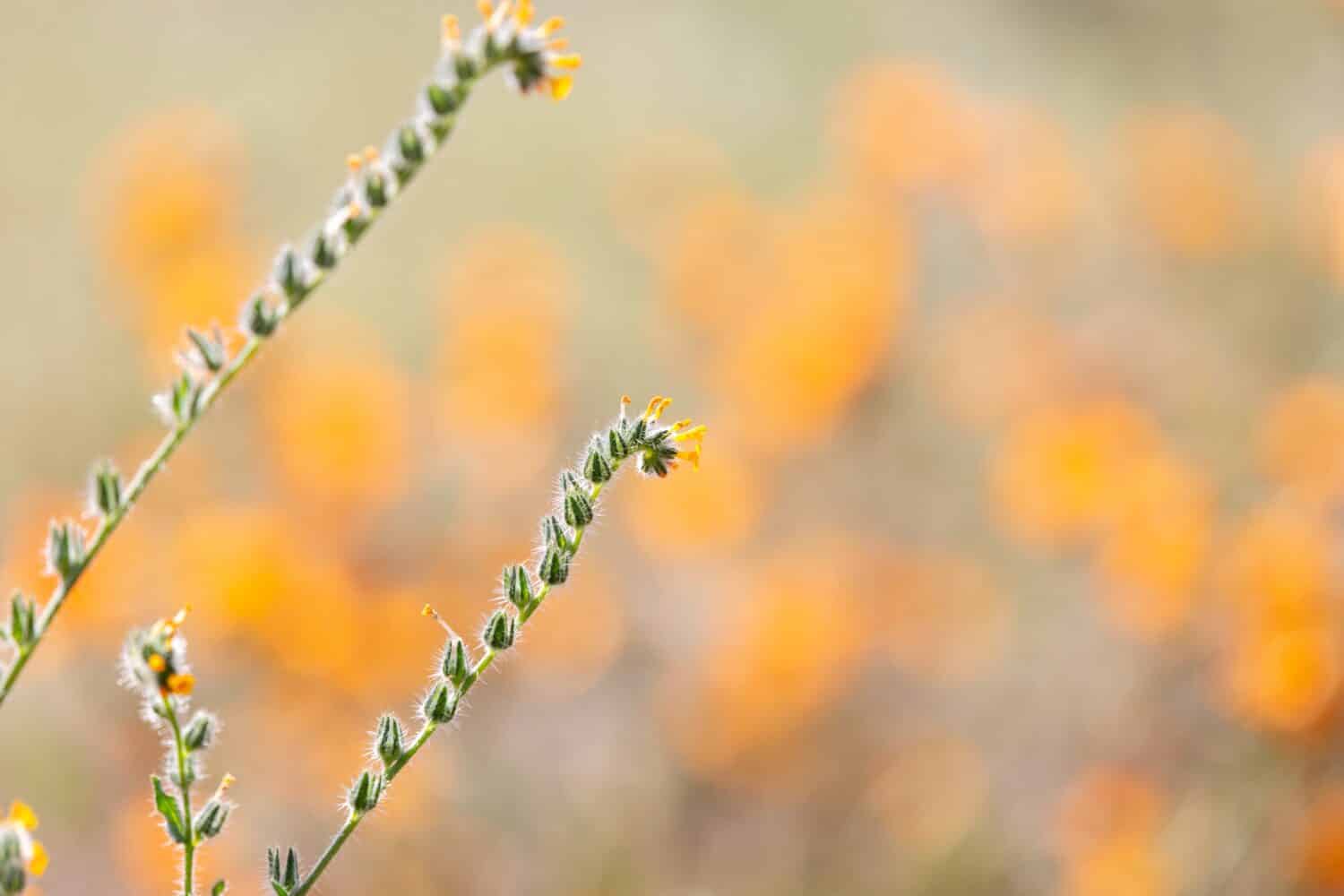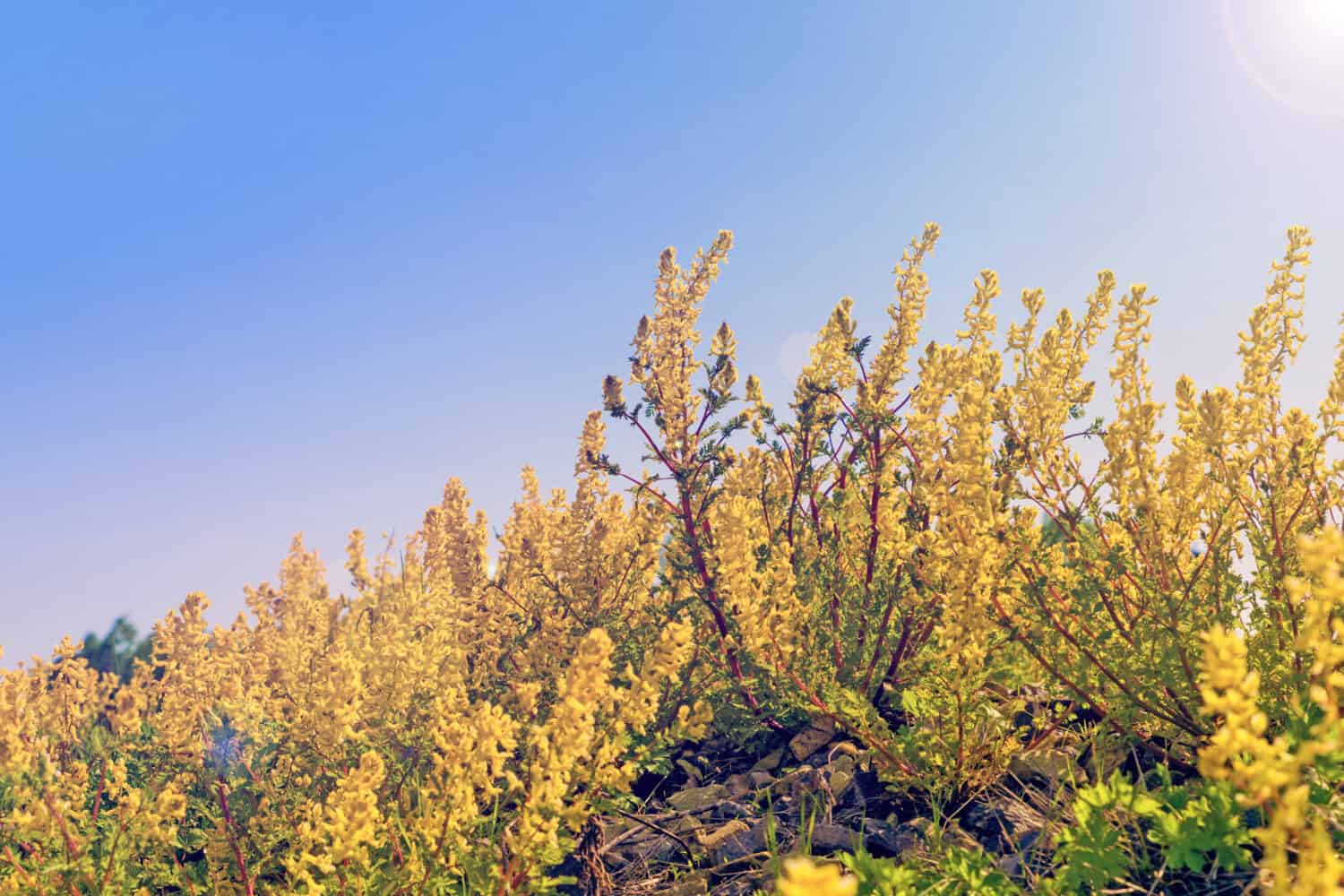
New Mexico is known for its beautiful landscapes and diverse flora. The state contains deserts, mountains, and expansive forests, with plenty of plant and animal life. But amidst the plants that call this state home, a few are not only dangerous to humans but also deadly. These plants have caused a range of adverse effects, from skin irritation to swelling, and even death. So, if you’re planning to explore the wilderness of the state, it’s vital to be aware of the dangerous plants found in New Mexico.
1. Oleander (Nerium Oleander)

The entire oleander plant is toxic to humans, animals, and some insects and is especially dangerous to children and dogs.
©Happy window/Shutterstock.com
The Nerium Oleander is a beautiful and often sought-after flowering shrub found in parts of New Mexico. Despite its attractive appearance, this plant is highly toxic and can have severe effects on humans.
The toxic nature of the oleander is due to cardiac glycosides such as nerin, oleandrin, olinerin, and digitoxigenin. These toxic compounds are in the entire plant, including the bark. Ingesting any part of the oleander plant can result in a slow heart rate, difficulty breathing, diarrhea, weakness, blurred vision, fainting, and sometimes death. The entire oleander plant is toxic to humans, animals, and some insects and is especially dangerous to children and dogs.
Despite the danger it poses, the Nerium Oleander continues to be popular. Its beautiful flowers bloom from early summer to mid-autumn. The clusters of 2-inch single or double blossoms are truly a sight to behold. It commonly grows in human-altered environments, such as yards and roadsides.
2. Bracken Fern (Pteridium Esculentum)

Bracken fern should not be consumed by humans or livestock, as it contains carcinogenic compounds.
©iStock.com/troyka
The bracken fern is a large and abundant perennial plant found in woodlands, shaded areas, and mountainous regions. Because its appearance resembles hay, it is common for horses to eat the fern. However, the amount of bracken fern in their food supply must be limited, or they may fall ill. The dried and fresh forms of the plant are both poisonous. Most experts recommend that bracken fern should take up no more than 20% of a horse’s diet.
The fronds of the bracken fern are divided into numerous lobes. They typically appear in spring, eventually dying off in autumn in temperate climates. However, in milder climates, they can survive for up to two years.
Humans and livestock should not consume bracken fern, as it contains carcinogenic compounds. Eating young fronds can lead to digestive tract cancer. Drinking untreated milk from cows that have consumed large amounts of the fern can cause stomach cancer.
The first type of bracken poisoning affects the availability of thiamine (vitamin B1) in an animal, causing brain damage. This type of poisoning is most commonly seen in horses, pigs, and occasionally sheep. It only occurs after the animal has consumed a large amount of the plant over several weeks.
3. Poison Hemlock (Conium Maculatum)

Poison hemlock is a class B noxious weed found in various sunny locations such as open fields.
©iStock.com/gabrielabertolini
New Mexico is home to a dangerous and toxic plant called poison hemlock. This plant can cause severe harm to both humans and animals if ingested. It can potentially lead to serious health problems, such as respiratory failure, acute renal failure, central nervous system damage, and death. Hemlock is the plant that was used to poison the famous philosopher Socrates in 399 BC.
It is important to seek medical help immediately if you suspect a person or an animal has ingested poison hemlock.
Not only are the leaves and stems of this plant toxic, but the plant can still pose a threat for up to three years after the plant has died! The dangerous compounds in poison hemlock are called alkaloids.
Poison hemlock is a class B noxious weed found in various sunny locations such as open fields, roadsides, and vacant lots. The plant thrives in the spring and can grow for two years. It can sometimes even become a perennial in the right conditions.
4. Burroweed (Isocoma Tenuisecta)

Burroweed contains the toxic substance tremetol that causes “trembles” in animals.
Image: MORSHININA ELENA, Shutterstock
©MORSHININA ELENA/Shutterstock.com
Another toxic plant found in New Mexico is burroweed, a member of the sunflower family. This hazardous plant can be found along roadsides, riversides, and irrigation canals. It poses a significant threat not only to cattle but also to their offspring if they consume contaminated milk. Ingestion of this milk by humans can also lead to harmful effects.
Burroweed flowers from September to November, featuring clusters of heads at the ends of branches and on top of the main stem. This plant contains the toxic substance tremetol, which can cause “trembles” in animals that consume a significant amount. Horses are particularly susceptible to this toxic substance.
5. Death Camas (Toxicoscordion Venenosum)

The bulb and mature leaves of death camas are the most poisonous parts, with potent hypotensive activity due to the presence of alkaloids.
©iStock.com/skymoon13
New Mexico is home to the dangerous death camas plant, found in fertile areas such as meadows and lakes. As the name suggests, this plant is dangerous and can cause serious effects if consumed. This poisonous plant poses a significant threat to cattle and other small livestock. Even a small amount of consumption can be fatal. Humans should also take care not to ingest any part of this plant, as it is highly toxic.
Death camas flowers grow in pointed clusters between April and July, featuring cream or white blooms. This plant contains steroidal alkaloids similar to those found in Veratrum (false hellebore). The bulb and mature leaves are the most poisonous parts, with potent hypotensive activity due to the presence of alkaloids.
6. Desert Marigold/Desert Baileya (Baileya Multiradiata)

Despite its toxic nature, the desert baileya has potential medicinal uses due to its antineoplastic agents.
©Barbara Ash/Shutterstock.com
The desert baileya, also known as desert marigold, is a common plant found throughout the desert regions year-round. Despite its beautiful yellow flower that often attracts animals and birds, this plant is highly toxic.
When cattle, especially older cattle, eat this plant, it can lead to a frothy mouth, appetite loss, slow heartbeat, and weakness.
The primary toxins found in desert marigolds are Hymenoxon and Sesquiterpene Lactones. Both green and dried parts of the plant are poisonous, with the highest toxicity in the flowers and seed heads.
Despite its toxic nature, the desert baileya has potential medicinal uses due to its antineoplastic agents. These agents are used in cancer medications for their antitumor activities and can be beneficial in treating the disease.
7. Indian Hemp/Dogbane (Apocynum Cannabinum)

The primary toxin in dogbane is cymarin, which was once used as a heart stimulant for humans.
©Ashley Swanson/Shutterstock.com
The dogbane plant is a common sight in fertile lands, often thriving near waterways and irrigation fields. Its presence can also be found along transportation routes like roads and railways. The growth of the plant starts in spring or early summer.
The entire plant is toxic, causing bloody diarrhea, weakness, and a slowed heartbeat in livestock, including horses. Although its toxic effects can be severe, death is a rare side effect of consuming dogbane (Indian hemp).
Green and dried dogbane are both toxic to humans and animals due to cardiac glycosides with similar actions to digitoxin. The primary toxin in dogbane is cymarin, which was once used as a heart stimulant for humans.
8. Fiddleneck (Amsinckia Intermedia)

Sheep and cows can be severely impacted by consuming Fiddleneck.
Image: Charles T. Peden, Shutterstock
©Charles T. Peden/Shutterstock.com
Fiddleneck, a toxic herbaceous annual, is prevalent throughout the state and flourishes in arid ecosystems. Sheep and cows can be severely impacted by consuming the plant. However, horses and pigs have a lower susceptibility to poisoning, although it can still be fatal in rare cases. Symptoms of fiddleneck poisoning include sluggish behavior, loss of appetite, and restlessness.
This plant blooms from early spring to midsummer and typically grows between 4-15 inches. However, mature specimens have been known to reach up to 4 feet tall. Fiddlenecks are widely distributed across diverse landscapes, from coastal regions to mid-elevations.
Consuming fiddlenecks can result in poisoning due to the presence of pyrrolizidine alkaloids. These alkaloids have a toxic effect on cells, altering DNA strands in the liver, kidneys, and lungs. This can lead to a range of harmful effects, including abnormally large red blood cells and disrupted cell division.
Fiddleneck is toxic in all its parts and forms, even when dried. As a rule, humans should avoid ingesting plants that are toxic to animals.
9. Golden Corydalis (Corydalis Aurea)

Golden corydalis is extremely toxic to sheep.
Image: Artem Zarubin, Shutterstock
©Artem Zarubin/Shutterstock.com
There is no shortage of golden corydalis in the state of New Mexico. The best place to find this plant in large quantities is in drier, sandy areas. Unfortunately, this plant is highly toxic to sheep. Even consuming a small amount, equivalent to 2% of their weight, can cause severe poisoning. Symptoms like rapid heartbeat, twitching, seizures, and staggering collapse are possible.
The peak blooming season for this plant is from May to July. It grows anywhere from 4 to 20 inches in height. This plant contains up to 10 alkaloids, and all its species are toxic to grazing animals as well as to humans.
10. Lupine (Lupinus)

During spring, the newly emerging growth is particularly poisonous.
©Nadya So/Shutterstock.com
The lupine plant is a dangerous species prevalent in New Mexico and causes the death of numerous sheep every year. If it doesn’t result in death, it can lead to birth defects in offspring. Additionally, cows who ingest this plant can suffer from poisoning or give birth to defective calves. Interestingly, not all species of lupine are toxic, but the majority of those found in New Mexico are.
Lupinine, a toxic alkaloid chemical, is present in these plants and can be harmful to both humans and animals. During spring, the newly emerging growth is particularly poisonous. The seeds and pods in the summer season pose a risk as well.
The flowering season for lupines varies based on the variety and zone. However, they usually bloom from late spring to early July. The species is locally common in a limited area in the south-central mountains of New Mexico and can often be found on open roadsides and road banks.
11. Foxglove (Digitalis)

This pretty plant contains digoxin, a dangerous toxin that can cause heart issues.
©iStock.com/Elmar Langle
Foxglove is a common plant found throughout New Mexico, primarily in home gardens. It has a beautiful bell-shaped purple flower, which makes it an attractive plant for gardeners. However, this pretty plant also contains digoxin, a dangerous toxin that can cause heart issues, breathing difficulty, and in rare cases, death. It is particularly dangerous if young children ingest the flower. However, the entire plant is poisonous.
Summary Of the 11 Dangerous Plants Found In New Mexico You Should Never Touch
| Rank | Dangerous Plant |
|---|---|
| 1 | Oleander (Nerium Oleander) |
| 2 | Bracken Fern (Pteridium Esculentum) |
| 3 | Poison Hemlock (Conium Maculatum) |
| 4 | Burroweed (Isocoma Tenuisecta) |
| 5 | Death Camas (Toxicoscordion Venenosum) |
| 6 | Desert Marigold/Desert Baileya (Baileya Multiradiata) |
| 7 | Indian Hemp/Dogbane (Apocynum Cannabinum) |
| 8 | Fiddleneck (Amsinckia Intermedia) |
| 9 | Golden Corydalis (Corydalis Aurea) |
| 10 | Lupine (Lupinus) |
| 11 | Foxglove (Digitalis) |
The photo featured at the top of this post is © iStock.com/Katrin_Timoff
FAQs (Frequently Asked Questions)
Why Are some plants poisonous?
Some plants produce toxins as a defense mechanism against insects, birds, mammals, and reptiles that try and feed on them. Not all poisonous plants are dangerous for humans, but some can be extremely harmful.
Thank you for reading! Have some feedback for us? Contact the AZ Animals editorial team.






